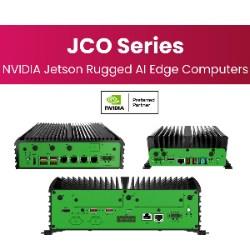The Exploding Use of Robotics in Logistics and Manufacturing
Researching your first robot purchase? Don't be intimidated.
Robotics firm GreyOrange raises $30 million, to expand overseas
Giving robots a more nimble grasp
Robo-Sabotage Is Surprisingly Common
Foxconn Seeks Manufacturing Sites in India
Myth Busting: Greater Manufacturing Automation Doesn't Mean Fewer Jobs
Chinese factory replaces 90% of humans with robots, production soars
The Crowning Conclusion: Universal Robots Saves 9 Hours of Production Time at Glidewell Laboratories
Musk, Hawking, Chomsky: Why they want a ban on killer robots.
Fastbrick Robotics' bricklaying machine builds investor interest
Why Drones are Ditching their DIY Roots
Toyota Accelerates Home Helper Robot Program
Japan`s Vision as Robotics Super Power; New Industrial Revolution Driven by Robots
How to Prepare Now for the Industrial Internet of Things
Records 2686 to 2700 of 2809
First | Previous | Next | Last
Featured Product

